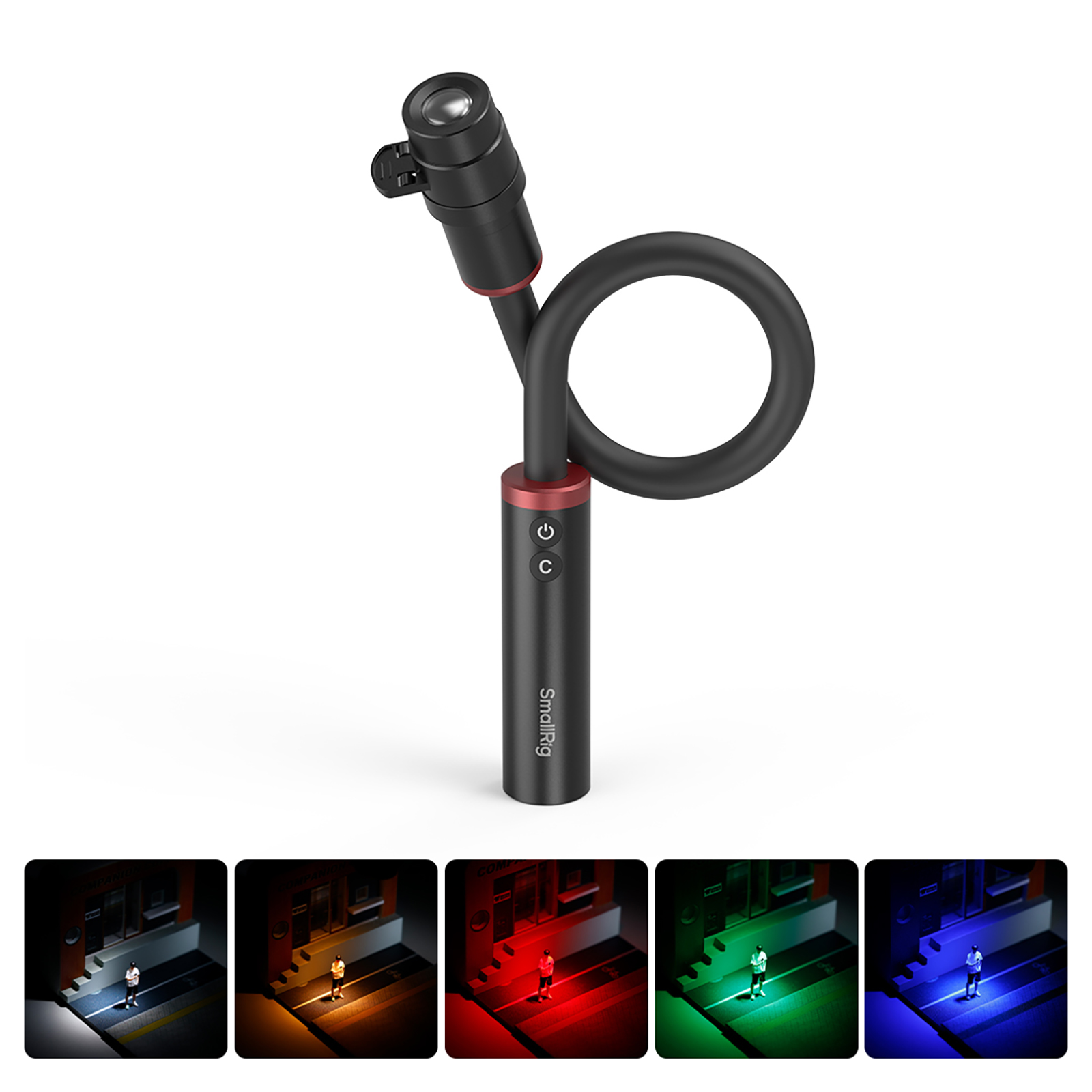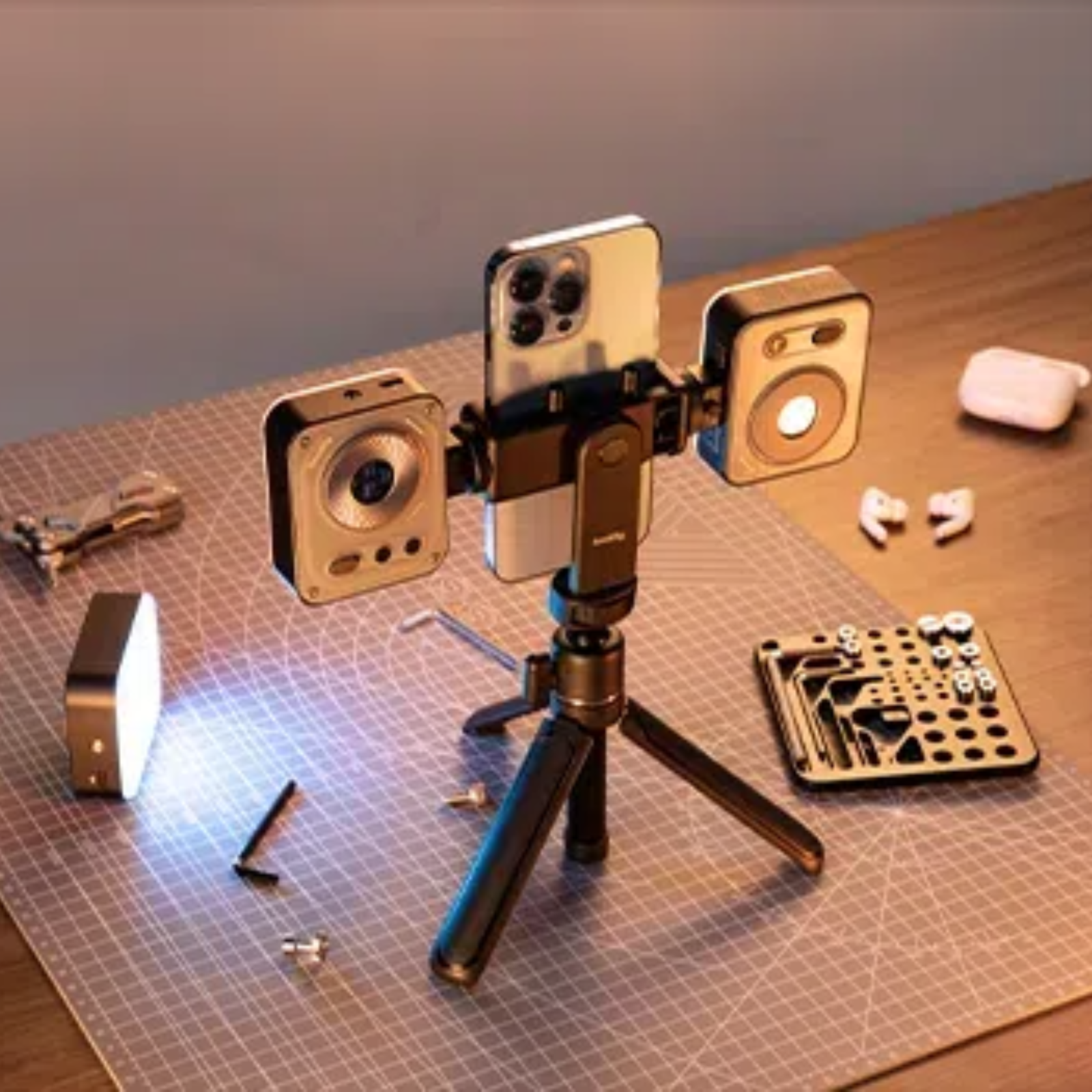In today's fast-paced photography landscape, charging speed and durability directly determine whether you capture the moment or watch it slip away. Traditional lighting systems with sluggish batteries and fragile construction create bottlenecks that modern workflows simply cannot tolerate. The question isn't whether your gear works under ideal conditions, but whether it performs flawlessly when deadlines compress and environments turn hostile.
This article examines two critical factors separating amateur equipment from professional-grade solutions: fast-charging technology that eliminates downtime, and durability standards that withstand years of demanding use. We'll explore how these elements integrate into real-world workflows and what benchmarks your lighting system must meet to support serious creative work.
Why Fast-Charging Batteries Revolutionize Photography Workflows
Traditional studio batteries require three to five hours for full charging, forcing photographers to maintain expensive battery arsenals or reject lucrative same-day bookings. Modern lithium fast-charging systems complete 80% charges in under ninety minutes, fundamentally altering scheduling possibilities. A wedding photographer can now accept morning ceremony coverage and afternoon portrait sessions without equipment anxiety, transforming two separate workdays into a single profitable engagement.
 The productivity mathematics prove compelling: conventional batteries averaging four-hour charge cycles limit professionals to two full-power sessions daily with standard two-battery setups. Fast-charging technology enables four to six sessions with identical equipment investment, directly multiplying revenue potential. Beyond raw numbers, rapid turnaround eliminates the psychological burden of constant power monitoring that distracts from creative decisions during critical moments.
The productivity mathematics prove compelling: conventional batteries averaging four-hour charge cycles limit professionals to two full-power sessions daily with standard two-battery setups. Fast-charging technology enables four to six sessions with identical equipment investment, directly multiplying revenue potential. Beyond raw numbers, rapid turnaround eliminates the psychological burden of constant power monitoring that distracts from creative decisions during critical moments.Integrating Fast-Charging Solutions Into Your Creative Process
Implement rotation charging by connecting batteries to power sources immediately after each session concludes, even for brief fifteen-minute intervals between client arrivals. This continuous topping-off maintains perpetual readiness without requiring dedicated charging blocks. Verify your lighting system accepts charging while mounted on stands, enabling simultaneous setup and power restoration during location scouts or lighting tests. For multi-day productions, establish overnight charging stations near shooting areas rather than distant equipment storage, reducing morning setup time by twenty minutes per day. Confirm compatibility between fast-charging batteries and existing light heads through amperage specifications—mismatched systems may accept connections but deliver only standard charging speeds, negating the upgrade investment.
Durability Standards: Beyond Basic Build Quality
Professional lighting equipment endures punishment amateur gear never faces: daily transport in vibrating vehicles, repeated assembly under time pressure, and operation in dusty warehouses or humid outdoor venues. Independent stress tests reveal that plastic-bodied lights fail at impacts averaging 1.2 meters, while aircraft-grade aluminum housings withstand drops exceeding 2 meters without compromising electronic integrity. Material composition directly correlates with lifespan—aluminum dissipates heat 60% more efficiently than polymer alternatives, preventing the thermal degradation that causes premature LED failure and battery capacity loss.
 Environmental resilience separates functional equipment from reliable tools. Quality studio lights maintain consistent color temperature across humidity ranges from 20% to 80% and operate without performance degradation between -10°C and 45°C. Sealed electronics prevent moisture infiltration during beach shoots or condensation-prone winter location work, while thermal management systems prevent overheating during extended three-hour video interviews. Photographers working in coastal regions or desert climates discover within months whether their equipment meets true professional standards or merely survives controlled studio conditions.
Environmental resilience separates functional equipment from reliable tools. Quality studio lights maintain consistent color temperature across humidity ranges from 20% to 80% and operate without performance degradation between -10°C and 45°C. Sealed electronics prevent moisture infiltration during beach shoots or condensation-prone winter location work, while thermal management systems prevent overheating during extended three-hour video interviews. Photographers working in coastal regions or desert climates discover within months whether their equipment meets true professional standards or merely survives controlled studio conditions.Maximizing Longevity Through Robust Stands and Mounts
Stand engineering determines whether expensive light heads survive or shatter during inevitable accidents. Professional-grade stands distribute weight through reinforced leg joints rated for twice the mounted equipment mass, creating stability margins that absorb bumps from passing assistants or unexpected wind gusts. Inspect locking mechanisms quarterly for wear indicators—quality clamps maintain grip force after 500+ adjustments, while budget alternatives slip dangerously after mere dozens of uses. Establish post-shoot protocols requiring visual inspection of all connection points, immediate cleaning of sand or debris from collapsible joints, and monthly lubrication of friction points with silicone-based compounds that won't attract dust. Store stands vertically in protective cases rather than horizontally stacked, preventing the leg warping that creates unstable bases and premature mechanical failure.
Workflow Integration Challenges and Solutions
Most photographers inherit lighting systems through piecemeal acquisition, creating hidden inefficiencies that compound over time. Mismatched battery chemistries between older and newer units force separate charging schedules, while incompatible mounting hardware demands redundant stand inventories. The most insidious bottleneck emerges during color-critical work—inconsistent output between aging and new light heads requires constant meter verification and post-processing correction that doubles editing time. Conduct an honest equipment audit by documenting actual charge times, measuring light output consistency across your inventory, and calculating minutes lost to equipment management per typical shoot day.
Modern camera systems communicate exposure data and color profiles through wireless protocols that advanced lighting can interpret for automatic adjustment, yet legacy lights remain manual islands in increasingly automated workflows. When cameras, lights, and editing software share standardized metadata, white balance corrections that once required ten minutes per hundred images become single-click batch operations. Evaluate whether your lighting system supports industry-standard communication protocols—proprietary systems lock you into single-manufacturer ecosystems that limit future upgrade paths and force expensive wholesale replacements when technology evolves.
Step-by-Step System Implementation Guide
Phase 1 establishes pre-shoot readiness by creating a 48-hour charging window before scheduled sessions. Connect all batteries to power sources two evenings prior, verify full charges the night before, then top off again two hours pre-shoot to compensate for natural discharge. Label each battery with last-charge dates using removable tape to prevent accidentally deploying units that sat uncharged for weeks. Phase 2 demands disciplined on-set handling: designate a protected equipment zone minimum three meters from traffic paths, never place lights on surfaces below knee height where kicks occur, and assign one team member explicit responsibility for monitoring battery levels every thirty minutes. Phase 3 maintenance begins immediately after pack-down—wipe all surfaces with microfiber cloths before dust hardens, inspect cables for fraying at stress points near connectors, and store batteries at 50-60% charge in climate-controlled spaces between 15-25°C to maximize cycle longevity. Document this routine in a shared checklist that every team member signs after completing their assigned tasks, creating accountability that prevents the gradual maintenance erosion that destroys equipment prematurely.
Modular Systems and Battery Performance Standards
Modular lighting architectures allow photographers to reconfigure equipment for vastly different assignments without purchasing redundant complete systems. A single power unit supporting interchangeable reflectors, softboxes, and barn doors transforms from hard-edged product photography light to diffused portrait illumination in under two minutes. This adaptability eliminates the common scenario where specialized shoots require renting supplementary equipment, directly reducing operational costs while expanding service offerings. Standardized mounting interfaces across an entire product line mean assistants master one connection system rather than juggling incompatible proprietary designs that slow setup and increase error rates. Manufacturers like SmallRig have developed ecosystem approaches where lighting components integrate seamlessly with camera rigs and support accessories, creating unified workflows from capture through post-production.
Battery engineering reveals quality through cycle testing—premium lithium cells maintain 80% original capacity after 800 complete discharge cycles, while budget alternatives degrade to 60% capacity within 300 cycles. This performance gap translates to replacement timelines: professional-grade batteries deliver three years of intensive use before requiring retirement, whereas economy options demand annual replacement despite lower initial costs. Independent laboratory analysis demonstrates that advanced battery management systems prevent the voltage irregularities causing color temperature shifts during discharge, maintaining consistent 5600K output from 100% to 15% remaining capacity.
Real-World Applications Across Photography Genres
Portrait studios operating six-day weeks report 40% reduction in equipment-related shoot delays after implementing fast-charging systems with aluminum-bodied lights, directly attributing twelve additional monthly bookings to newfound scheduling flexibility. The durability advantage becomes quantifiable—studios previously replacing damaged light heads annually now operate identical units for four-plus years despite higher session volumes. Location photographers working in coastal wedding venues document how sealed electronics survive salt-air exposure that corroded previous equipment within eighteen months, while reinforced stands withstand sandy beach conditions and transport over uneven terrain without the joint failures that plagued lightweight alternatives. Commercial shooters conducting daylong automotive sessions in desert climates verify that thermal management systems maintain performance during eight-hour shoots in 40°C ambient temperatures, conditions that forced previous lights into thermal shutdown after three hours, causing costly production delays and client dissatisfaction.
Future-Proofing Your Lighting Investment
Proprietary battery systems and closed-architecture light heads create expensive obsolescence traps within three to five years as manufacturers discontinue support for previous generations. Professional-grade modular systems with standardized power connections and firmware-updatable controllers maintain compatibility with evolving accessories and communication protocols, protecting initial investments for decade-long operational lifespans. Photographers who purchased quality modular lights in 2018 continue adding new reflectors, wireless triggers, and smartphone control interfaces to existing power units, while those who chose integrated all-in-one systems face complete replacement costs as newer camera technologies emerge incompatible with fixed lighting electronics.
Calculate true equipment costs through usage projections rather than sticker prices—a durable fast-charging system priced 60% higher than budget alternatives but lasting four times longer with triple the daily session capacity delivers cost-per-shoot savings exceeding 70%. Factor maintenance expenses into comparisons: sealed aluminum housings require only periodic cleaning, while plastic units demand frequent component replacements for cracked battery doors, stripped mounting threads, and failed cooling vents. Forward compatibility matters increasingly as computational photography integrates lighting metadata into AI-driven editing workflows. Lights supporting open communication standards automatically adapt to emerging software capabilities through firmware updates, while closed systems become isolated relics requiring manual workarounds that negate technological advances happening throughout the rest of your production pipeline.
Investing in Professional-Grade Lighting Equipment
Fast-charging capability and structural durability function as inseparable pillars supporting professional photography operations—neither alone suffices when clients expect consistent results across unpredictable conditions and compressed timelines. Equipment that charges rapidly but fractures under transport stress creates identical workflow disruptions as indestructible lights tethered to wall outlets for hours between sessions. Modern professional standards demand both attributes working in concert, eliminating the historical compromise between power availability and physical resilience.
The workflow integration strategies detailed throughout this examination—rotation charging protocols, modular system architectures, and disciplined maintenance routines—transform theoretical equipment capabilities into practical competitive advantages. Photographers implementing these methods report measurable improvements: additional daily bookings, reduced rental expenses, and elimination of equipment-related client disappointments that damage professional reputations built over years.
Evaluate your current lighting inventory against concrete benchmarks: sub-two-hour charge times to 80% capacity, aluminum construction withstanding two-meter drops, sealed electronics rated for extreme humidity, and open-standard compatibility ensuring five-year relevance. Equipment failing these tests doesn't merely underperform—it actively constrains your creative potential and income ceiling. Conduct a comprehensive audit this week, documenting actual charge durations, inspecting housings for stress cracks, and calculating time lost to equipment management per shoot. The data will reveal whether your lighting supports your ambitions or sabotages them.